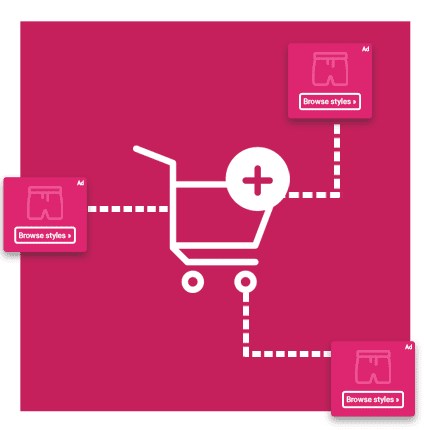How to Decide Where to Invest in Paid ECommerce Ads: 4 Questions to Ask


Source: Unsplash
Having money invested in the right activities is one of the biggest concerns eCommerce business owners have. The problem is that there are so many potential investment points available. How do you choose the right one?
To help you find an answer, this post will look at five questions most eCommerce shops should answer to understand past purchasing behaviors and new customer habits. They’re designed to get you thinking about what your customers want next and how you can be ready with an offer before they ask.
1. Is paid search driving traffic?
Paid search remains a reliable option for most businesses to drive traffic and sales. If you’re finding it helpful or have seen success in the past, it’s time to refresh your campaigns. To get the most out of your investment, consider using something essential to eCommerce: great photos.
In July 2020, Google updated its search ad capabilities to include an image extension program. These units offer clickable video and text content at the same cost as previous text-only units. Even better is that you can use up to 20 different keyword-relevant images. The program has some restrictions, but generally, eCommerce images should be approved pretty quickly.
What’s especially useful is that Google is adding native support for efforts like highlighting sales or time-sensitive deals. Test them out with some increased ad spend, but leverage existing imagery to minimize the investment requirement at the same time.
2. Does your audience own smart speakers?
Now, let’s look at a foundational element of paid media. There’s something lurking in most rooms that aren’t currently easy to target with PPC. However, it’s likely just a matter of time before someone develops an ad unit designed to reach this hidden gem. And, you want to be ready when the smart speaker becomes a viable target.
Projections say that nearly 75% of U.S. households will have a smart speaker by 2025 and that’s on top of voice-friendly devices like smartphones and TV remotes. These devices can be used to quickly search for a wide range of things, from recipes and emails to your very products. Shopping is projected to become a dominant voice practice as people try it and get used to the functionality.
So, how should an eCommerce advertiser take advantage of this? Start by investing in some smart speakers and devices to test. See how well they work for your searches. Learn what kinds of things get the results you want and what searches cause you to ask a question differently. Use that information to change how you write product descriptions and emails.
That foundation will help you understand the long tail keywords common in your users’ questions. You’ll get validation on the searches you’re targeting now. And in the (likely near) future, you’ll be ready to capitalize when smart speakers and voice assistants offer paid placements.
A final benefit to get excited about is that voice search may push back against click fraud. It takes much longer to do a voice search and make a selection, which makes potential fraud take longer and likely easier to spot. As you review more voice data, there’s potential learning around what legitimate searches look like that may help you avoid some costlier nefarious clicks.
3. Are shipping and fulfillment hurting ad spend?
Few eCommerce companies start with order fulfillment as a core competency. That means most companies are at risk of poor execution, which can ultimately hurt your capabilities as a paid media strategist.
The claims you make in your ads need to be verified when someone clicks through and tries to shop at the eCommerce store. With the pandemic creating large supply chain disruptions and order fulfillment problems, shipping offers have become a way to stand out in paid ads, such as Google Smart Shopping. Those ads show up across Google’s display network including the Shopping section and Gmail. They get your name out there easily by automating much of the process.
Source: A Screenshot off of Google
Do a quick search and you’ll likely see offers around free shipping, generous returns policies, and other shipping elements. Work with operational teams to understand what the shop offers and reflect this accurately in your ads. That way, you can get the most out of your campaigns and the awareness that Smart Shopping campaigns provide. You’re building a positive, truthful relationship instead of creating an issue that you’ll have to address in other paid ads and on-site content down the road.
4. Is your conversion timeline lengthening?
The final question to review for eCommerce investments is if your buyer’s journey is getting longer or more complex. Journeys often lengthen as your audience diversifies or products/orders become higher value. Those changes make each element of your funnel more important and may mean you nudge people more to stay in the funnel.
To avoid losing some of these customers, it’s probably time to invest more in retargeting. Retargeting won’t necessarily reduce your conversion timeline, but it does help keep people on that path. The closer customers get to the purchase point, the more useful a message reinforcing your value can be.
With 70% of customers who see a retargeting ad becoming more likely to convert, these efforts become significantly important for driving revenue across those longer journeys.
What’s next for your audience?
These five questions are designed to get you thinking about today’s audience, tomorrow’s possibilities, and what your business needs to do to grow and meet such opportunities. Most can be tested with minimal investment, allowing initial success to help drive deeper usage. When you decide what route to take, keep asking yourself the core question here: what will my audience want next?



